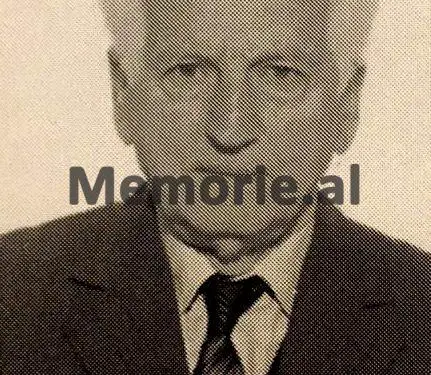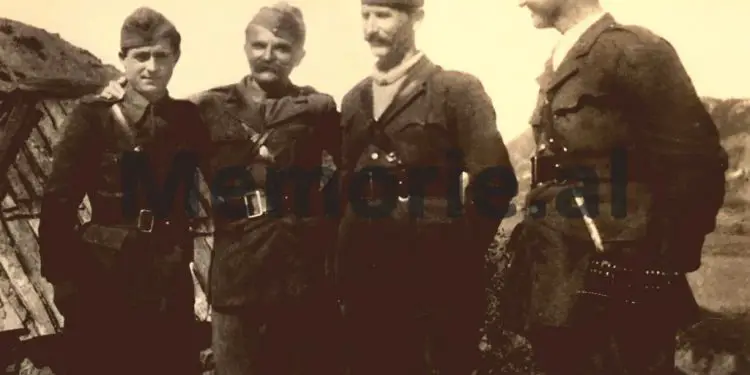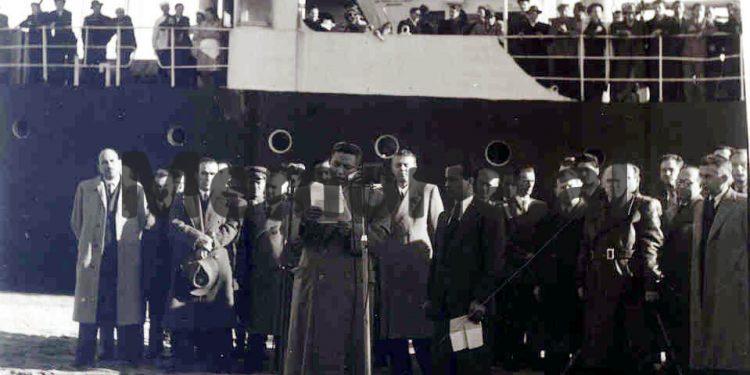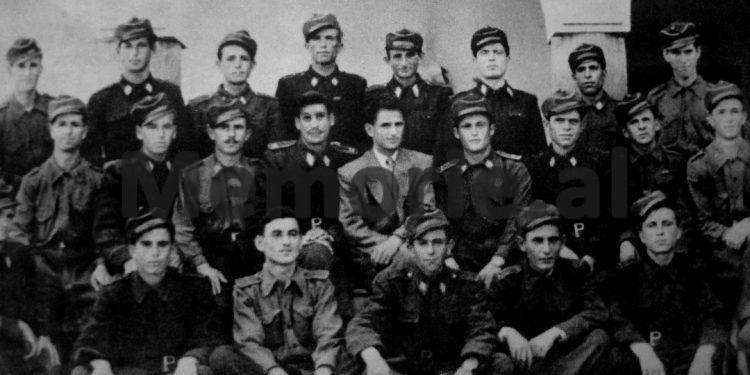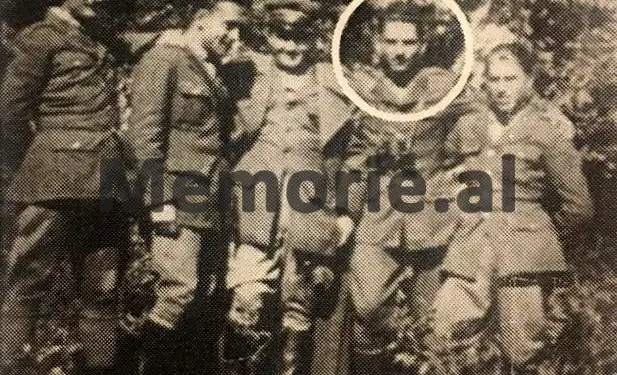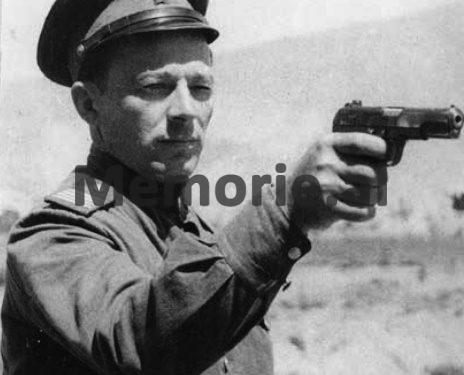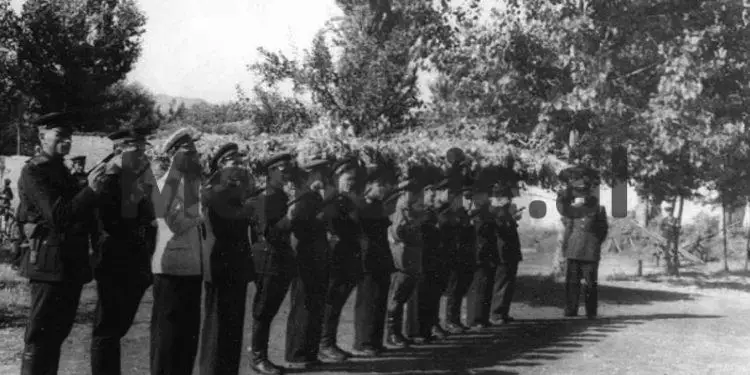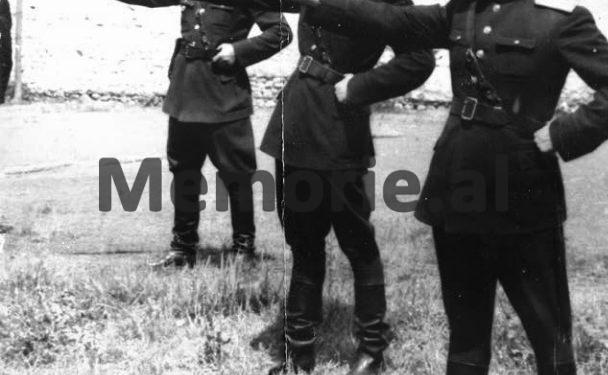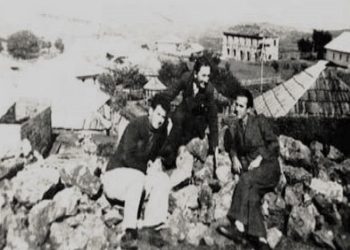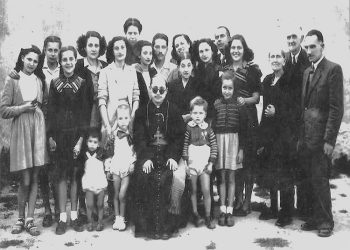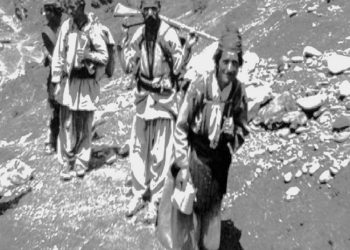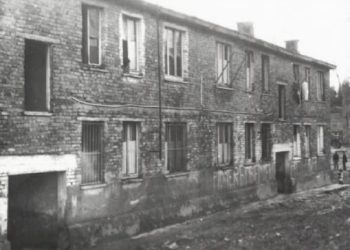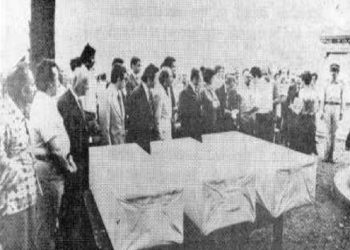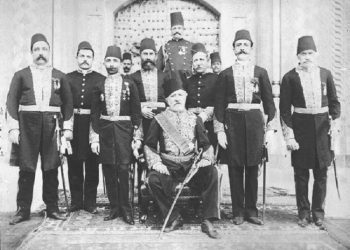Dashnor Kaloçi
Memorie.al publishes the unknown story of Kostandin Kazanxhiu from the city of Durrës, who after being one of the main assassins of the guerrilla units of Durrës during the war period where he was arrested by the Germans, went partisan to the Peza Group and the Brigade of 22 Attacking, fighting as far as Visegrad, Yugoslavia. His appointment to the State Security Section immediately after the end of the war, being sent on a secret mission to Greece, from where he never returned, and his family, only in 1965 was told that he had been declared a “Martyr.” of the Homeland ”, and decorated it with the“ Medal of Courage ”, as well as gave its name to a street in the coastal city of Durrës. Testimony of his brother Alfred Kazanxhi and his former Albanian and Greek colleagues, for the secret mission in Greece.
“Around 1950, the senior officer of the Ministry of the Interior, Hilmi Seiti, came and met me and informed me that my brother, Kostandin, had been captured by the Greeks during a mission. Hilmi instructed me that our family should be careful and protected from any possible provocation that might be inflicted on us. A few months later, in January 1951, various people and our relatives informed us that Koço had been executed in Greece and that they had heard this news from Radio London and some other Greek radios, which were broadcast to him. referred to the official communiqué of the Greek Government. Even after this news, we still had hopes that Koço was alive and that his other brother, Ernesti, who was an officer with the rank of major, during a military parade, addressed Mehmet Shehu, asking him how it was the truth about our brother Constantine. ” We were witnessed by Alfred Kazanxhi, a former Soviet Justice Ministry law graduate who for the first time told the story of the disappearance without a trace of his brother Constantine, a former State Security officer.
Kazanxhi on a secret mission in GreeceBut who was Kostandin Kazanxhi, what was his past, and under what circumstances was he captured by the Greek authorities? As early as January 1946, Interior Minister Koci Xoxe and his aide, Colonel Myftar Tare, urgently summoned to the Ministry a group of 10-12 men, including Lieutenant Kostandin Kazanxhi, and informed them that they had been assigned to carry out a top-secret mission to help the Albanian government give to the Greek partisans of the EAM, who at the time were fighting to overthrow the government of Prime Minister Caldaris. According to Iliaz Lumani, one of the 12 soldiers charged with the mission, Albanian officers would maintain constant contact and co-operate with the main leaders of the Greek Communist Party, led by Niko Zaharjadhis and the Partisan Headquarters. was stationed on Mount Gramoz and commanded by General Marko Vafjadhis. This assistance consisted of the supply of food, clothing, weapons, and other military equipment, as well as the treatment of Greek partisans, wounded in Albania. In this mission, Lieutenant Kazanxhi was in charge of the group and performed several important tasks, mainly in the border area of Gramoz Mountain and in the village of Nikolica, where the main secret point was located were meetings with senior Greek military and EAM leaders took place… In the late summer of 1948, Constantine was taken prisoner and arrested by Greek government forces. Under what circumstances did Constantine’s arrest take place and what was his mission?
Testimony of Greek partisans
Regarding Kostandin’s arrest, some of the former Greek partisans named Jorgo Kondalanis, Panajotis Kollovos, Nikolau Plastiras, and Isidoros Rozaqis, who were with him during that mission (their testimony was translated by Spiro Kallo) testified where they say: “We were aware of Koço’s arrival in Greece, because at the request of our Headquarters, in September 1948, the Albanian Government would send us a ship with weapons and other combat materials. According to the order, we went out to meet him at the appointed place in the small harbor of Teraka in the Southeast of Leconia, on the Peloponnese peninsula. Before this ship, accompanied by Koço, arrived in April 1948, another ship had arrived at the port of Leconia, and after unloading the goods, it left without being detected. While the ship that accompanied Koço, did not see our signals which were with the lighting of fires and it was inserted in the direction of the pier very close to the city, where after seeing the lights tried to leave walking side by side of the pier, but there he encountered a rock. At the time, from the noise that was made, it was spotted by a Greek naval patrol boat (government forces) which immediately set off in its direction, but was found in the fire that opened the ship where Koço was. At that time, we who were waiting for the Albanian ship saw that an alarm was sounded and a Greek plane which that flew low, materializing the Albanian ship. The bombing of the plane was almost completely destroyed, and Koço and five members of her crew were able to escape alive after jumping into the sea and swimming to the shore where we were waiting for them. After we met we fled into the depths of the mountains, splitting into three teams of five or six people each. Kocho met him to be on a squad with the Greek commander, George Kondalanis, and stayed with us on the mountain until the end of September 1949. At that time, we were in a difficult situation, and in one case we had to. to approach a village where we found some apples to eat and after we left from there, some Greek soldiers of the Pursuit Departments had seen the remains of the apples and suspecting that there was movement, strengthened the control and stayed for a long time in waiting for our arrival there. Not knowing that we had fallen in the footsteps of the Pursuit Departments, after a few days we returned to that place and there we fell into the trap and were found surrounded by the Greek asphalt units that were well-positioned and started firing at us. After that, the gunfight started, killing some of our comrades and wounding others, while others managed to escape by breaking through the siege. Koço (Commander George Kondalanis) and I were also wounded in that attempt, with a minor leg injury. In this state, I (Kondalanis) and Jorgo, we were able to leave from there, leaving some friends dead and hiding in a forest. Shortly after the food shortage, Koço was forced to come down to a village to provide us with something to eat and enter a grocery store. The seller of the shop, which had been put in the service of the asphalt wards, as soon as he saw Koço, suspected the unknown man, and immediately pulled out his pistol and stopped him there until the pursuit wards that nearby went and arrested him. immediately. He was then sent to prisons in Athens, where he was subjected to lengthy investigative proceedings. In that prison, Koço stayed for more than a year and then he underwent a trial where he was sentenced to death as a foreign agent and was executed on December 27, 1951 “, the testimony of former Greek partisans of the EAM, who in September 1949, had come out in the small harbor near the Peloponnese in anticipation of the Albanian ship loaded with weapons which were accompanied by the lieutenant of the Ministry of Internal Affairs of Albania, Kostandin Kazanxhi.
In 1965, the family was notified and was declared a “Martyr of the Fatherland”.
But what do Koço’s former colleagues testify and how do his brothers remember the last meeting with him? Former Security Lieutenant Iljaz Lumani recalled: “Although Koço was barbarically tortured during the investigation and his problem was raised by the Greek government to the UN, he did not open his mouth and did not say a word about us, his comrades, who continued for several years. our mission in Greece ”. And his brother, Alfred Kazanxhi, testified: “When we last met with Koço, he hugged us tightly and laughed and said, ‘I’m not coming back.’ From those words we understood that he had taken on an incredibly difficult action that might be the last for him, but he did not disobey the order given to him and set out. Although from various sources we learned some things about our brother, until 1965, the state did not give us any official notice of his fate. That year, my mother and I were summoned to the Central Committee and we were officially informed that: Constantine was declared a martyr of the homeland and after some time they brought home the decoration “Order of Courage” awarded by the People’s Assembly and every May 5. his friends and those of the leadership came to visit us. Since then I have met many of Koço’s former comrades who had worked together on that mission, as well as some former Greek partisans who told me that he had been betrayed, as one of the crew members the ship that departed from Durrës, which was also the commissar of that group, trapped them by colliding with the Greek navy “, Alfred Kazanxhi concluded his story, about his brother Kostandin, who was executed by the Greeks in December of the year. 1951, as he had gone there “for state reasons” and to this day the family has no record of his whereabouts.
Who was Kostandin Kazanxhi?
Kostandin Kazanxhi was born in the city of Durrës in 1923 to a middle-class family where his father, Dhimitri, was working as a judge at the Shkodra Court and as an economic advisor to the SINGER Society. After finishing Unique school in the city of Durrës, Kostandini was sent by his family to the city of Vlora to attend classes at the High School of Commerce, which he was forced to discontinue after two years, due to the difficult economic situation where his family happened. But, during those two years that he stayed in the Vlora Shop, Koço came in contact with communist ideas and participated in several demonstrations organized by the students of that school, together with Skënder Çela, Vllas Arapi, Ndue Palin, etc. After returning to the city of Durrës, he started working as an apprentice in several bars and then as a foreman at the Durrës Seaport. Around 1941-’42, when the Anti-Fascist Movement began to be organized in the city of Durrës, Kostandini, together with his two brothers, Alfred and Ernest, his sister, Krisafgjinë, and his mother Pandora, were among the first to be activated as a family in the groups. educational and the first communist cells of the coastal city. Shortly after the formation of the Communist Party, Constantine took part as one of the main members of the city’s guerrilla unit, distinguished himself in several actions, such as that of the kidnapping of the merchant’s weapon, Gjon Zaja, in the kidnapping of an urban school. in the kidnapping of sugar that was deposited in a warehouse of the branch of the State Bank of that city, in the action of kidnapping weapons in the Italian Navy, in the assassination attempt against the lieutenant, Gj. V., et al. From the beginning of 1942, their home became one of the main bases of the War in the whole district of Durrës, where some of the main exponents of the senior communist leadership of the SNP and comrades of the their other illegals and partisans were wounded. Also, in the apartment of the Kazanxhi family (the third largest and most important communist base in the district of Durrës), several secret meetings were held, where weapons, ammunition, food, clothing, which were collected, were collected. they were then sent to the Peza area. In the summer of 1943, Constantine was charged with participating in the formation of the National Liberation Council of Manza and other villages in the area. Shortly afterward, as much to the eye of the Italians, Constantine was assigned to join the Peza Group (Shijak Battalion), where he was appointed head of the communist youth. On November 19, 1943, he was charged with carrying out an operation in the city of Durrës, where he was arrested by the Germans and held in prison until April 1944. After his release from prison, he came to Tirana and worked illegally. , until August of that year and again went to the Peza Group. After the formation of the 22nd Assault Brigade, he joined it as the youth officer of the IV Battalion and a month later as the company’s commissioner. As part of that brigade, Constantine took part in all the fighting that took place between Shijak, Puka, Shkodra, Decic, Tuz, Podgorica, and as far as Visegrad in Bosnia, in the Yugoslavia of that time. Immediately after the end of the war at the end of November 1944, he was appointed to work at the Internal Affairs Section of the Durrës District (Security Branch) and for some time was sent to the Xhafzotaj Farm, where he helped implement it. Agrarian reform in that area. In early 1946, Constantine was assigned to a secret mission in Greece and never returned, as he lost his life without a trace. Only in 1965, his family was officially notified that he had been declared a “Martyr of the Fatherland”, and the Presidium of the People’s Assembly decorated him with the “Order of Bravery” with the motivation: a court of the Greek monarchy-fascists, for loyalty to death to the People’s Republic of Albania ”. Later, one of the streets of the coastal city of Durrës was named after him and it also became a symbolic tomb in the Martyrs’ Cemetery of that city. After the ’90s, with the proposal of the Association “Durrësi”, the Municipality of Durrës awarded the title “Gratitude of Durrës”./Memorie.al





